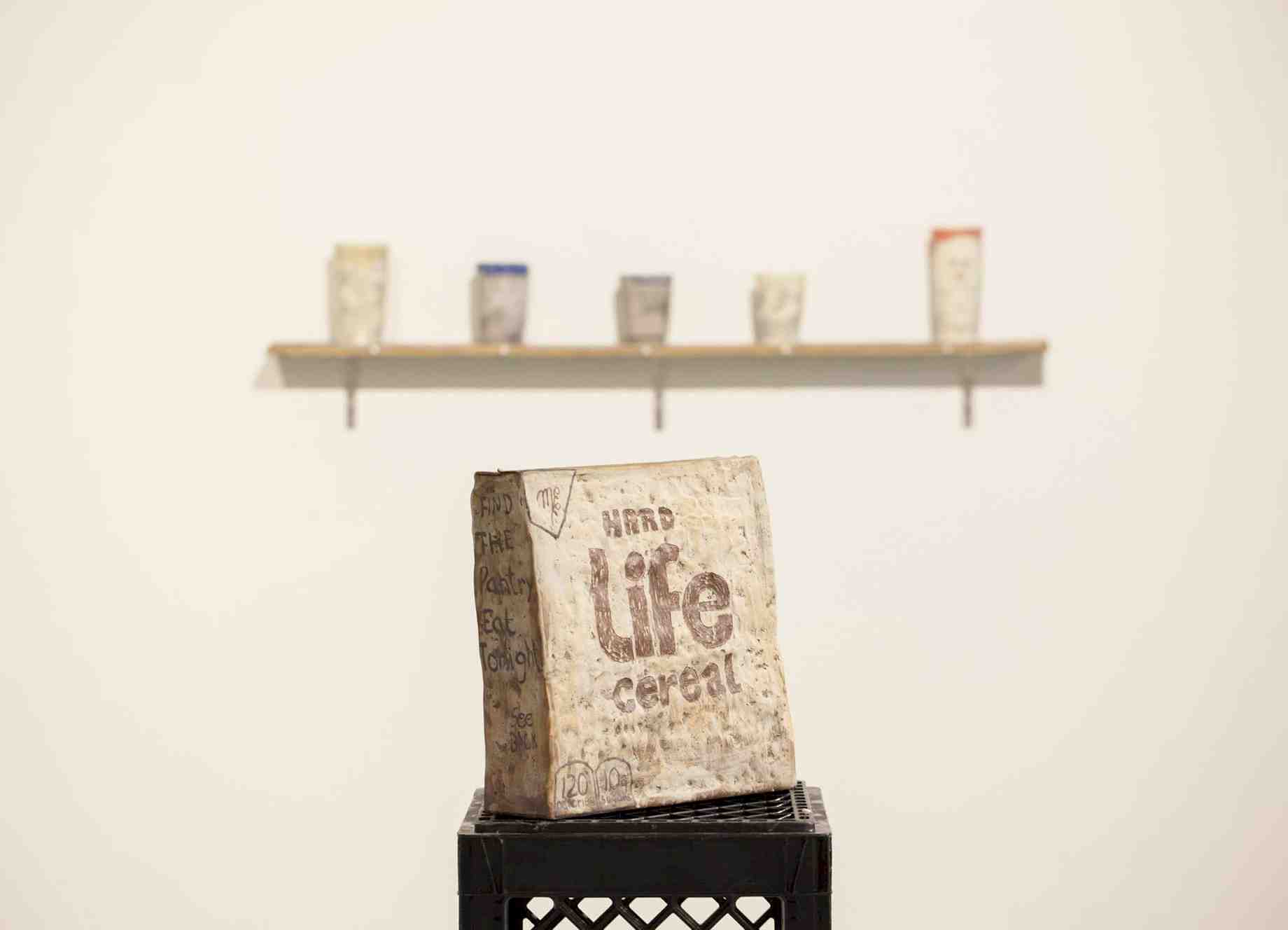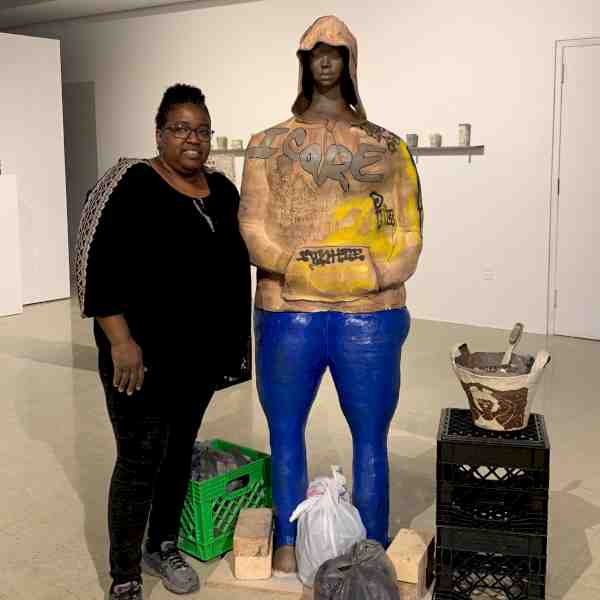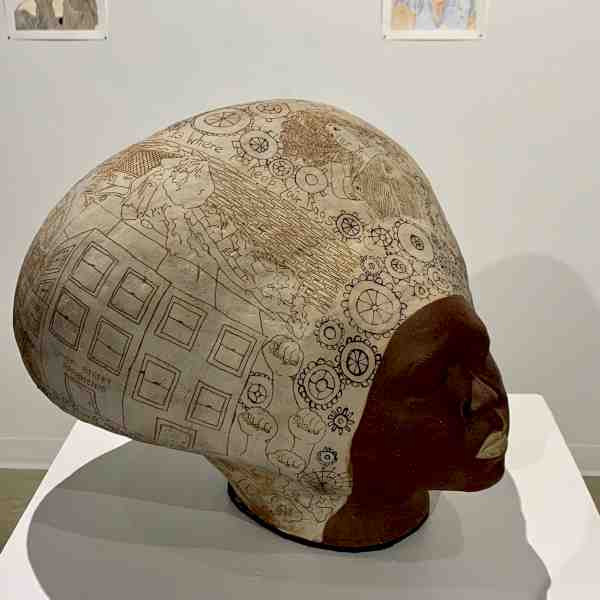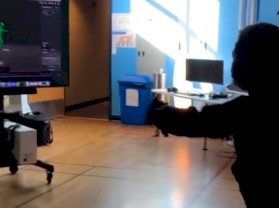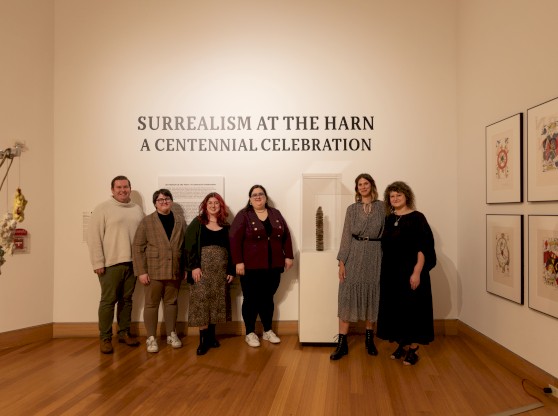Have you ever walked downtown, sat down on a bench, and noticed a handrail placed directly in the center? Handrails are strategically positioned in the middle of public benches to obstruct the homeless from laying down to sleep there at night.
Artist Michelle Ettrick is well aware of the challenges that come along with homelesnesss. She lived in a homeless shelter for ten months, but with some perseverance, she fought her way out of an extremely difficult situation.
Ettrick (BFA Art ‘17) attended college in order to expand her education, starting with her Associate of Arts at the College of Central Florida, her BFA at the University of Florida, to finally receiving her MFA in ceramics at Pennsylvania State University. For her MFA thesis, Ettrick drew on past experiences to call to attention the struggles the homeless community faces.
Here, Ettrick voices the struggles of the homeless community, a community rarely heard.
Ettrick’s first language is Spanish, and she responded in both her native tongue and English.
- Lee el artículo en español
¿Cómo describirías tu estilo artístico?
Veo que mi estilo cae dentro del estilo narrativo contemporáneo. Yo uso imágenes para contar historias. Algunas de estas historias provienen de experiencias de la vida real o problemas actuales que pueden afectar mi vida o mi comunidad.
¿Cuándo te interesaste por la cerámica?
Tomé una clase en la universidad comunitaria como un curso electivo. Fue entonces cuando conocí a Charlie Cummings, ex instructor de The College of Central Florida. Charlie vio talento donde yo no esperaba. Me enseñó y me animó a seguir haciendo y practicando. No podría pasar un día sin querer tocar arcilla.
¿Por qué decidiste enfocarte en las luchas de la comunidad de personas sin hogar como tu tesis?
Cuando regresé a la universidad después de más de 20 años, vivía en un refugio para personas sin hogar durante aproximadamente 4 meses. Hubo muchas personas y programas que me ayudaron a salir de ese sistema. Y como mencioné antes, conocí a mi mentor Charlie, quien a través de su mentoría me ayudó a comprender que una mayor educación aseguraría que nunca volviera a terminar en esa situación. Quiero ser esa persona algún día para otros. Si mi historia puede ayudar, incluso sea una persona saber que no tiene que permanecer en el sistema y que hay una salida que me alegrará el día.
Basado en su investigación, ¿qué crees que la comunidad típicamente piensa acerca de las personas sin hogar? ¿Qué crees que puede cambiar esta perspectiva?
Durante la escuela de posgrado en Penn State University, investigué documentales sobre las personas sin hogar. Vi a muchos de ellos enfocarse en la población sin hogar que eran drogadictos, delincuentes o prostitutas que no querían cambiar y volvieron a los mismos hábitos incluso después de recibir ayuda. Esa no es toda la población sin hogar. Las drogas y el alcohol no son la única razones por la cual las personas se quedan sin hogar. Mi show de segundo año consistió de la instalación de una imitación de una carpa para personas sin hogar en el campus. La gente venía cuando estaba allí y hacía preguntas y conversaba sobre la instalación. También tuve a una estudiante de doctorado, Ciara Newton, quien se sentó en algunas ocasiones y también tuvo la conversación con las personas que pasaban. Muchos de los estudiantes y profesores admitieron que nunca pensaron realmente en las personas sin hogar o cómo llegaron a esa situacion. Hablé con mujeres sin hogar que ahora trabajan y algunas incluso han regresado a la escuela. No sé si la visión del mundo cambiará, pero solo podía esperar que así fuera. Sé que algunos de los visitantes con los que contacté dijeron que lo pensarían dos veces cuando se tratara de ayudar a la comunidad de personas sin hogar. Siento que la perspectiva de las personas podría cambiar si las personas que se encargan de contar "la historia de las personas sin hogar" serían responsables y obtuvieran todos los puntos de vista de esa comunidad.
Desde su perspectiva artística, ¿cómo decides usar cerámica, escultura o pintura para transmitir tu mensaje?
Esto puede sonar un poco extraño, pero las piezas a veces me hablan. Empecé tratando de pensar en qué quería decir y pensar qué forma tomar después. Esto ha sucedido, pero la mayoría de las veces tengo que hacer múltiples formas. Se sientan allí uno al lado del otro y después me llega una historia a la mente que me gustaría contar.
Hable sobre su uso de la tipografía y las declaraciones en su cerámica.
Mi tipografía se refiere al graffiti en las paredes de edificios o baños. Esta influencia proviene de recuerdos de la vida en áreas urbanas cubiertas de graffiti e influenciadas por la música hip-hop. Desde que era una niña creciendo en Nueva York, me encantaba dibujar y garabatear, y el graffiti era lo que dibujaba. Siempre me encanta ser grafitera, pero siempre se quedo en el papel. Algunas de las declaraciones que uso como “Nunca te rindas” son frases que me repito todos los días.
¿Cómo influyó su experiencia en la Universidad de Florida en su carrera?
En la Universidad de Florida es donde aprendí a entender la escultura con la profesora Nan Smith. Fue la primera vez que comencé a hacer trabajos figurativos. Cuando comencé, estaba segura de que iba a fallar. Nan fue un instructora increíble y cualquiera que tomo su clase, sea un estudiante principiante o intermedio. Tuve la bendición de aprender también con la profesora Linda Arbuckle antes de que ella se retirara. Todos los que formaban parte del personal de la escuela de arte cuando asistí a UF tuvieron una influencia positiva en mi trabajo. Nan Smith, Linda Arbuckle, Anna Colluori Holcombe y Derek Reverts compartieron sus conocimientos cuales me ayudaron mucho en la escuela de postgrado.
¿Qué quieres que la gente aprenda de tu trabajo?
Si el trabajo que estoy mostrando habla de las personas sin hogar, me gustaría que los visitantes aprendan que todas las personas sin hogar no son usadores de drogas o alcohólicos. Hay muchas de esas personas con sueños y talentos que no pueden compartir o expresar. He escuchado a personas decir que no le dan a las personas sin hogar porque van a desperdiciarlo en alcohol y drogas. Tal vez, después de mi show, entiendan que podrán donar a personas sin hogar y como yo hay otros que quieren la oportinidad de cambiar sus vidas. Es difícil hacerlo sin apoyo. Donar comida asegurará que una persona y sus familias puedan comer. Donar ropa los mantendrá abrigados y poder ir a entrevistas de trabajo. Siento que contar mi historia ha cambiado la cara de las personas sin hogar para algunas personas. Como dije antes, aunque sea una persona cuenta.
¿Qué sigue para ti?
Yo quiero trabajar con una comunidad que proporciona acceso al arte para estudiantes que the otra manera no lo podrían lograr. Me gustaría que esto suceda especialmente en una comunidad con estudiantes de color (pero todas las razas serian invitado a participar). Mi objetivo es tener mi propio estudio en el que estos estudiantes, familias, hombres y mujeres de la comunidad puedan venir a expresarse a través del arte.
- Read the article in English
How would you describe your artistic style?
I see my style falling within contemporary narrative style. I use imagery to tell stories. Some of these stories come from real life experiences or current issues that may affect my life or my community.
At what point did you develop an interest in ceramics?
I took a class in community college as an elective course. That is when I met Charlie Cummings who is a former instructor at The College of Central Florida. Charlie saw talent where I was not expecting. He mentored me and encouraged me to continue making and practicing. I could not go a day without wanting to touch clay.
Why did you decide to focus on the struggles of the homeless community as your MFA thesis?
When I returned to college after over 20 years, I was living in a homeless shelter for about 4 months. There were many people and programs that helped me get out of that system. And as I mentioned before, I met my mentor Charlie who through his mentoring helped me understand that more education would make sure I never ended in that situation again. I want to be that person one day. If my story can help even one person know that you don’t have to stay in the system and that there is a way out it will make my day.
Based on your research, how do you believe the community typically views the homeless? Do you believe this perspective can change?
During graduate school at Penn State University, I researched documentaries about the homeless. I saw too many of them focusing on the homeless population that were drug addicts, criminals or prostitutes that didn’t want to change and kept going back to the same habits even after receiving help. That is not the entire homeless population. Drugs and alcohol are not the only reason why people become homeless. My second-year show consisted of homeless tent installation on campus. People would come by when I was in it and ask questions and have conversations about the installation. I also had a PHD student, Ciara Newton, who sat in on some occasions and also had the conversation. Many of the students and faculty admitted to never really thinking about the homeless at all or how they got there. I spoke to women who have been homeless that are now working and some have even returned to school. I don’t know if the whole world view will change but I could only hope so. I do know some of the viewers I came in contact with did say they would think about it twice when it came to helping the homeless community. I feel that people’s perspective could change if the people that take it upon themselves to tell “the homeless story” would be responsible and get all points of view from the homeless community.
From an artistic perspective, how do you decide between functional pottery, sculpture, and painting to convey your message?
This may sound a little out there but the pieces often speak to me. I started trying to figure out what I wanted to say and trying to think what form to make for it after. This has happened but most of the time I have to make multiple forms. They will sit there next to each other and it sparks a story I would like to tell on it.
Can you talk about your use of typography / statements on your ceramic pieces?
My typography refers to graffiti on the walls of buildings or bathrooms. This influence comes from memories of life in urban communities covered in graffiti and influenced by hip-hop music. Since I was a young girl growing up in New York I loved drawing and doodling and graffiti was what I drew. I always fantasized about being a graffiti artist but it always just stayed on paper (As far as I would say publicly). Some of the statements that I use like “Never Give Up” are phrases I repeated to myself every day.
How did your experience at the University of Florida influence your career?
At the University of Florida is where I learned figure sculpting with Professor Nan Smith. It was the first time I started to make figurative work. When I first started, I was sure I would fail. Nan Smith was an amazing instructor and anyone that took that class whether they were a beginner or intermediate student, came out of that class with much better work than they expected. I was Blessed to also experience learning from Linda Arbuckle before she retired. Everyone that was part of the staff when I attended UF was a positive influence on my work. Nan Smith, Linda Arbuckle, Anna Colluori Holcombe and Derek Reverts shared their knowledge which served me well in Grad School.
What one thing do you want viewers to take away when they observe your work?
If the work I am showing is speaking of the homeless, I would like people to come out understanding that all homeless people are not drug users and alcoholics. There are many homeless people with hopes and dreams and talents that they are not able to share or express it. I have heard people say I don’t give to the homeless because all they are going to do is waste it on alcohol and drugs. Maybe after my show they will understand that giving or donating to the homeless will reach someone like me that all they want is a chance to get out of the system and succeed. It is hard to do so without support. Donating food will assure that a person and families get to eat. Donating clothes will keep them warm and provide clothing for attending job interviews and school. I feel like telling my story has changed the face of homelessness to some people. As I said before, any one person counts.
What is in store for the future?
I really want to work with a community that provides accessibility to art for students that would otherwise not be exposed to it. I would especially like this to happen in a community with students of color. My life goal is to have my own studio in which these students and men and women of the community could come to express themselves through art.
You can follow Michelle on Instagram @michelleettrick or visit her website.
